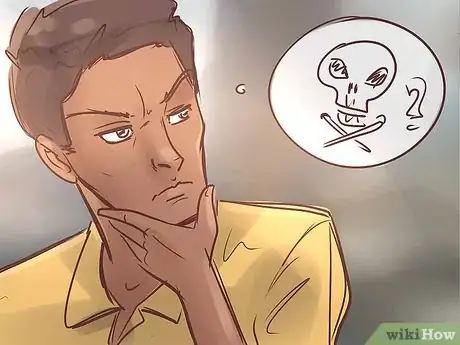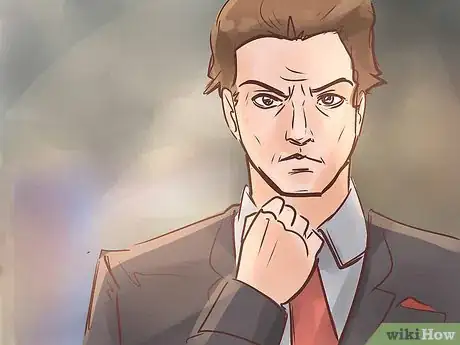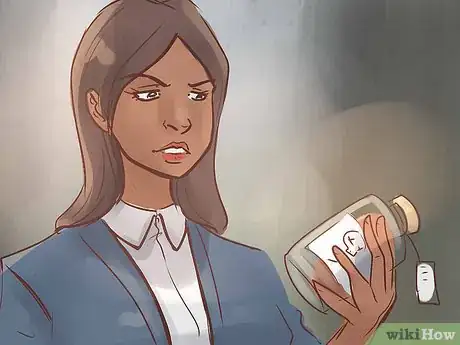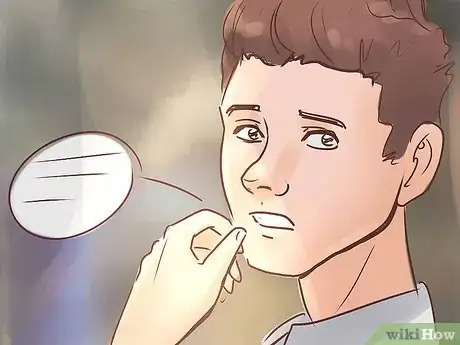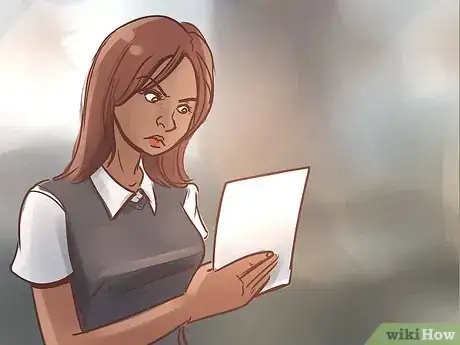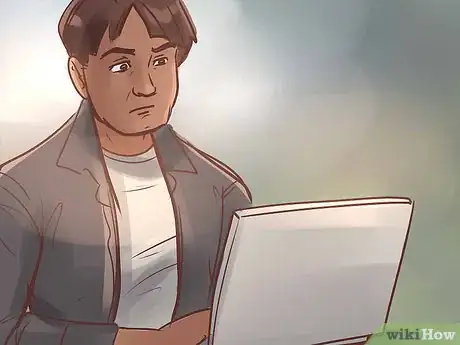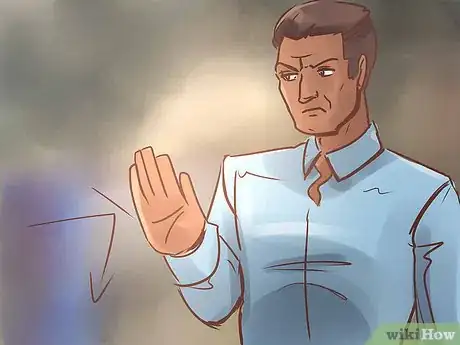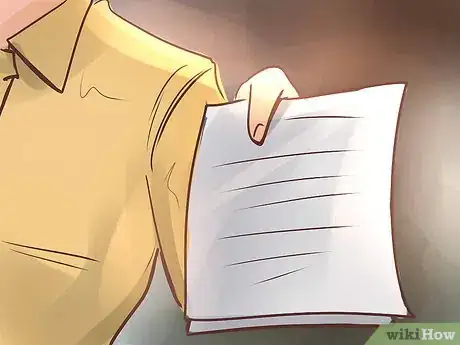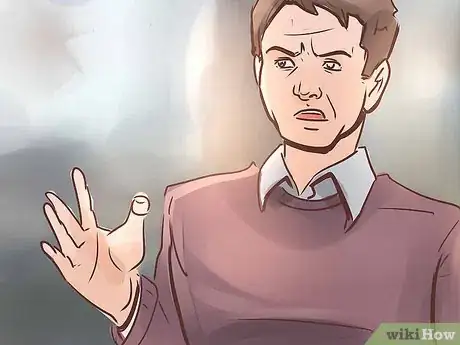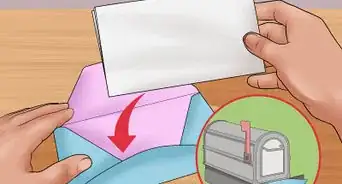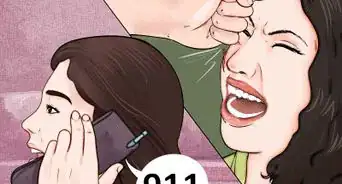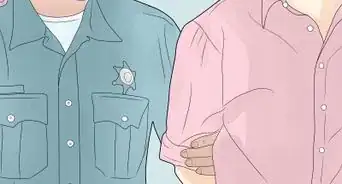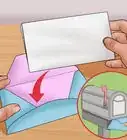This article was co-authored by Clinton M. Sandvick, JD, PhD. Clinton M. Sandvick worked as a civil litigator in California for over 7 years. He received his JD from the University of Wisconsin-Madison in 1998 and his PhD in American History from the University of Oregon in 2013.
There are 14 references cited in this article, which can be found at the bottom of the page.
This article has been viewed 42,826 times.
Murder is a criminal offense in every jurisdiction, although jurisdictions might define murder slightly different. In most states, there are two kinds of murder: first degree and second degree. There is also a civil action called “wrongful death.” If you bring a lawsuit for wrongful death, then you can recover money damages for the loss of your loved one.
Note: This article is relevant to the United States only. For any other jurisdiction in the rest of the world (common or civil law), you will need to contact your local law advisory service or a lawyer for relevant clarification.
Steps
Understanding Murder
-
1Identify first degree murder. There are generally two kinds of murder: first degree and second degree. Each requires different mental states. In other words, what separates first degree from second degree murder is what the defendant was thinking.[1]
- First degree murder is an unlawful killing that is willful and premeditated. The defendant planned to commit murder or “lay in waiting” for the victim.[2]
- First degree murder requires the “specific intent” (willfulness) to end someone’s life, although it does not have to be the victim’s life. If someone shoots a gun with the intent of killing his father, then the intent exists even if he ends up hitting and killing his mother, who was standing beside the father.
- First degree murder also requires deliberation. The deliberation does not have to be for any minimum length of time. Nevertheless, the murderer must have deliberated long enough to develop the specific intent to kill.
- First degree murder is an unlawful killing that is willful and premeditated. The defendant planned to commit murder or “lay in waiting” for the victim.[2]
-
2Recognize the elements of second degree murder. Second degree murder covers a variety of situations which lack the willfulness and premeditation of first degree murder. For example, impulsively killing someone in the middle of a fight would be second degree murder.[3] This murder lacks the “deliberation” necessary for first degree murder.
- Second degree murder also exists where the defendant does not specifically intend to kill the victim, but knows that death is a likely result of his actions. If you strike someone in the head with a hammer, then you may not intend for the person to die. But since you know death is a likely result, then you could be guilty of second degree murder.
- Finally, second degree murder exists when the defendant shows a lack of regard for human life by acting with extreme recklessness. If you fire a gun into a crowd without the intent to specifically kill someone, you nevertheless have acted with depraved indifference to human life.
Advertisement -
3Distinguish manslaughter from murder. You might consider manslaughter “murder” because the defendant kills the victim. For this reason, you should also learn the definitions. Although you might think manslaughter is murder, the state considers manslaughter less blameworthy because of the defendant’s mental state.[4]
- Voluntary manslaughter: the defendant kills because of a provocation. Voluntary manslaughter is often called a “heat of passion” crime, e.g., a husband coming home to find his spouse in bed with another person. (If the killing doesn’t immediately follow from the provocation, then it is murder, not manslaughter).
- Involuntary manslaughter: the defendant unintentionally killed the victim but still acted recklessly. Involuntary manslaughter differs from second degree murder in the extent of the defendant’s recklessness. The more extreme or depraved the recklessness, the more likely that second degree murder has occurred.[5]
-
4Realize that the body does not have to be found. Some people mistakenly believe that if the victim’s body is never found then the defendant cannot be found guilty. This is not true. There is no legal requirement that a body be found.
- Instead, there needs to be evidence of death. People have been convicted of murder based on a single blood drop from the victim that is found in the defendant’s car.
-
5Learn about wrongful death. Murder is a criminal offense. Accordingly, the state prosecutor is tasked with bringing a case against a murder suspect. A private citizen cannot sue another person for murder.
- However, private citizens can sue another person for “wrongful death.” For example, after O.J. Simpson was acquitted for the murder of his ex-wife and her friend, the victims’ families then brought a “wrongful death” lawsuit in civil court. Wrongful death lawsuit can be brought by the victim’s surviving relatives.
- Wrongful death suits can be based on intentional acts or on accidents. For example, you can bring a wrongful death suit against someone who shoots your loved one. You can also bring a wrongful death suit against someone who accidentally strikes your loved one with a car or who commits medical malpractice.[6]
- If you win a wrongful death lawsuit, then you can be compensated for the victim’s lost wages, as well as lost companionship and medical or funeral expenses.[7] [8]
-
6Ask the prosecutor questions. If a loved one has been killed and the state is prosecuting the suspected killer, you may have a lot of questions. For example, you might want to know how strong the state’s case is and what it needs to prove to convict the defendant of murder. You should try to schedule a meeting with the prosecutor to talk over any questions you have.
- Many large cities have victim’s advocates within the prosecuting attorney’s office. These people act as liaisons between the prosecutor and the victim’s family. You can ask your advocate any question that you have.
- Though you might attend court every day, you should realize that you have no role to play in the investigation or prosecution of the suspect. You should leave it up to the professionals to prove that the defendant committed murder.
Proving Murder in Court
-
1Present evidence of death. Although the prosecutor does not have to produce a body, he or she does need to convince the jury that the victim has died. Often, this is not difficult since finding a dead body is what triggers the investigation and prosecution.
- The prosecutor typically has the state’s coroner testify as to time and method of death. For example, a coroner would offer an expert opinion that the bullet in the victim’s chest killed him, not a pre-existing illness.
-
2Introduce the murder weapon. A critical piece of evidence in murder trials is the murder weapon. People are often killed by guns, knives, or vehicles. These weapons help link the defendant to the victim. If the defendant’s fingerprints are on a knife, and the knife killed the victim, then the state has presented a strong connection between the defendant and the victim’s death.
-
3Use witnesses to put the defendant at the scene. To convict for murder, the jury has to be convinced beyond a reasonable doubt that the defendant was the cause (or one of the causes) of the victim’s death. Accordingly, prosecutors will often use witnesses to place the defendant at the crime scene.
- They can also use physical evidence to place the defendant at the scene, such as fingerprints, DNA, or hairs.
- Eyewitness testimony of someone killing another person is called “direct” evidence, whereas DNA, fingerprints, and hair is commonly called “circumstantial.”[9] No greater weight is afforded to “direct” evidence than to “circumstantial” evidence. Although defense attorneys like to say the case against their client is “only circumstantial,” circumstantial evidence is often more powerful than “direct” evidence, because witnesses can often be confused.
-
4Prove the appropriate mental state. If a defendant is charged with first degree murder, then the state must show that the defendant acted with the specific intent to kill and after deliberation.
- There are many ways to prove specific intent, which will depend on the facts of the case. Often, the prosecutor can prove the specific intent to kill simply from the act. For example, a gunshot to the head indicates, by itself, a specific intent to kill. Stabbing someone repeatedly in the chest and back also indicates an intent to kill.
- To prove deliberation, a prosecutor can show that the defendant took the time to purchase the murder weapon, create an excuse to visit the victim, sneak the weapon into the house, and then wait for the victim to expose his or her back to the defendant. All of these actions show reflection and planning. The killing is not spontaneous, as it is with second degree murder.
-
5Disprove self-defense. A defendant might claim that the killing was in self-defense. When a defendant raises self-defense as a justification for the killing, he or she must present some evidence to support it. Nevertheless, the prosecutor must disprove that the killing was justified.[10]
- Disproving self-defense is, again, a fact-specific inquiry. The defendant might stab the victim and claim that she feared for her life. However, if she stabbed him 12 times, all in the back, then evidence tends to disprove self-defense, as the defendant could have fled at any time.
Gathering Evidence of Wrongful Death
-
1Hire a lawyer. If you are thinking of bringing a private cause of action for wrongful death, then you need the help of a lawyer. This is a complicated area of law, with high stakes.[11] Only a qualified attorney will know if you can bring a wrongful death lawsuit and what evidence will be most helpful.
- To find a qualified attorney, contact your state’s bar association, which should run a referral program.
- You might be worried about whether you can afford a lawyer. However, you should realize that many lawyers will take a wrongful death case on “contingency.” Under this arrangement, the lawyer declines to charge a fee but will instead take a percentage of any money you win at trial or through settlement (typically between 25-50%).[12]
- With a contingency fee agreement, you typically are still responsible for court costs, such as filing fees and fees associated with court reporters. You also have to pay for experts, who can be expensive.[13]
-
2Get the coroner’s report. You will need to know the actual cause of death. This will help your lawyer decide who you should sue. You cannot win a wrongful death case if you try to sue someone who was not the cause of your loved one’s death.
-
3Request copies of relevant police reports. If the victim was killed during a car accident or was murdered, then there may be police reports created about the incident. You will need to request them, so that you can get the names of relevant witnesses.
-
4Gather financial documents. You can help your lawyer calculate the amount of damages you might be owed by gathering proof of the victim’s wages and benefits. You may recover for wages lost due to the death. You should get the following:
- copies of tax returns
- copies of the deceased’s W-2 or 1099 forms for the past several years
- description of any benefit provided by the deceased’s employer, such as profit-sharing, 401(k) contributions, and medical benefits
Bringing a Wrongful Death Lawsuit
-
1Check if you can sue. Whether you can bring a wrongful death suit will depend on state law. Generally, a spouse, children, and the parents of unmarried children can sue. In other states, more distant family members, such as grandparents or siblings may sue.[14]
- Still in other states anyone who would suffer financially can sue, regardless of blood relationship.
- To see if you can sue, find your state’s wrongful death statute. You can search the Internet by typing “wrongful death” and then your state. Alternately, you could ask a lawyer.
-
2File a complaint. You will initiate the wrongful death lawsuit by filing a complaint in court. Your lawyer should draft it for you. The complaint alleges the facts that surrounded the death and asks for relief. The complaint is then filed in court and a copy is served on the defendant.
- You shouldn’t wait to file. Each state has time limits for filing a wrongful death lawsuit. These are called the “statute of limitations.” Each state sets its own deadline, but generally you will have two years, which begins from the date of the misconduct that caused the victim’s death.[15]
-
3Engage in discovery. “Discovery” is a process whereby the parties exchange information in their possession or control. Discovery can be a long process in a wrongful death lawsuit. The most common forms of discovery include:[16]
- Requests for Production. The parties can request documents from each other. In a wrongful death suit, you might request a copy of the defendant’s insurance policy.
- Interrogatories. These are written questions posed to the other party, who must answer them under oath. If you are bringing a wrongful death suit based on medical malpractice, you might ask the doctor to list other lawsuits filed against him. You could also ask whether he or she has ever been disciplined by a governing medical board.
- Depositions. During a deposition, questions are posed to a person face-to-face, who answers them under oath. Depositions usually take place in a lawyer’s office with a court reporter present. Typically, your lawyer will depose the defendant as well as other witnesses.
-
4Defend against a motion for summary judgment. Civil trials (like wrongful death claims) involve the filing of many motions before trial. Some of these motions try to dispose of the case altogether before ever getting to trial. One common motion is a motion for summary judgment. You should expect the defendant to file one.
- In a motion for summary judgment, the defendant argues that there are no issues of material fact in dispute and that he or she is entitled to judgment as a matter of law. Practically, this means that the defendant wants the judge to decide that it is so obvious that the defendant is not to blame for the death that a trial would be unnecessary.
- Your lawyer will oppose the motion for summary judgment and argue that factual or legal issues remain to be resolved at trial.
-
5Select a jury. On the first day of trial, you will select jurors from the jury pool. To find jurors helpful to your case, the lawyers will ask the potential jurors questions. This process is called “voir dire.”
- You will want to identify jurors who might be prejudiced against your case so that you can strike them from the panel. Your attorney can draw out prejudices by asking jurors if they have ever had a family member killed, or if they have ever been the defendant in a lawsuit.
- You should think about taking a bench trial. In a normal jury trial, the judge decides questions of law and the jury decides facts. But you have the option of using the judge to determine both the law and the facts. One study showed that you are twice as likely to win a medical malpractice case if you take a bench trial (as opposed to a jury trial).[17]
-
6Prove the underlying claim. Each wrongful death lawsuit is different. If you bring a wrongful death lawsuit based on medical malpractice, then you will need to prove medical malpractice at trial. By contrast, if the victim was killed by assault and battery, then you will need to prove that at trial.
-
7Present evidence. As the plaintiff, you will present evidence first. You will call and examine witnesses and get records admitted into evidence. You must carry your burden of proof. In an unlawful death case, you must prove that it is “more likely than not” that the defendant caused the victim’s death. This is called a “preponderance of evidence.”[18]
- You may also need to call an expert witness. Experts are often needed in medical cases, to show that a doctor’s treatment fell below a required standard of care or to show that a medicine “caused” death.[19] You do not always need expert witnesses, but they are useful in complicated cases.
-
8Cross-examine witnesses. Your attorney will have the opportunity to cross-examine all witnesses presented by the defense. Your attorney will try to show the gaps in their testimony or try to undercut their testimony with prior inconsistent statements.
- Your attorney will also get to cross-examine any expert witness for the defense. Your lawyer will challenge the expert’s credentials or suggest that he is a “paid witness” for the defense. Your lawyer may also try to impeach the expert through use of an expert treatise that contradicts the testimony given by the expert.
-
9Deliver closing arguments. During the closing argument, your lawyer needs to explain how the evidence presented at trial satisfies the legal requirements.
- In a bench trial, the court will often request that the attorneys write briefs and then argue those briefs. These briefs contain lengthy legal arguments and apply the evidence to the controlling legal authority.
-
10Await the verdict. In a jury trial, the judge will read the jury instructions, and then the jury will retire to deliberate. In about half of all states, jury verdicts for civil trials do not have to be unanimous. Instead, a plaintiff can prevail if 10 out of 12 jurors decide for her.
References
- ↑ http://criminal.findlaw.com/criminal-charges/second-degree-murder-overview.html
- ↑ http://criminal.findlaw.com/criminal-charges/first-degree-murder-overview.html
- ↑ http://criminal.findlaw.com/criminal-charges/second-degree-murder-overview.html
- ↑ http://www.nolo.com/legal-encyclopedia/homicide-murder-manslaughter-32637-2.html
- ↑ http://www.nolo.com/legal-encyclopedia/murder-vs-manslaughter-state-mind.html
- ↑ http://www.alllaw.com/articles/nolo/personal-injury/how-wrongful-death-lawsuit-works.html
- ↑ http://www.nolo.com/legal-encyclopedia/wrongful-death-claims-overview-30141.html
- ↑ http://www.alllaw.com/articles/nolo/personal-injury/how-wrongful-death-lawsuit-works.html
- ↑ http://www.shestokas.com/general-law/direct-vs-circumstantial-evidence-observation-vs-inference/
- ↑ http://criminal.lawyers.com/criminal-law-basics/criminal-trials-who-has-the-burden-of-proof.html
- ↑ http://www.nolo.com/legal-encyclopedia/wrongful-death-claims-overview-30141-2.html
- ↑ http://www.injurytriallawyer.com/faqs/is-the-contingency-fee-different-in-a-wrongful-death-case.cfm
- ↑ http://www.injurytriallawyer.com/faqs/is-the-contingency-fee-different-in-a-wrongful-death-case.cfm
- ↑ http://www.nolo.com/legal-encyclopedia/wrongful-death-claims-overview-30141.html
- ↑ http://www.nolo.com/legal-encyclopedia/wrongful-death-claims-overview-30141-2.html
- ↑ http://www.injurytriallawyer.com/library/wrongful-death-lawsuit-the-discovery-process.cfm
- ↑ http://www.ncbi.nlm.nih.gov/pmc/articles/PMC2628515/
- ↑ http://www.nolo.com/legal-encyclopedia/proving-wrongful-death-civil-case.html
- ↑ http://www.nolo.com/legal-encyclopedia/medical-malpractice-using-expert-witnesses-30087.html


